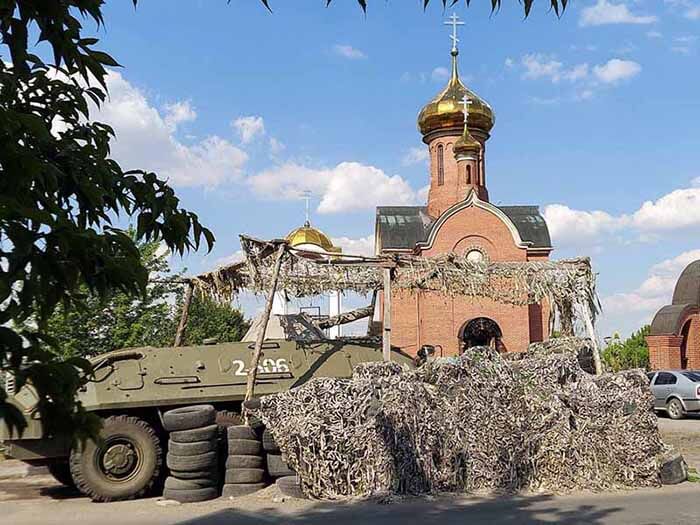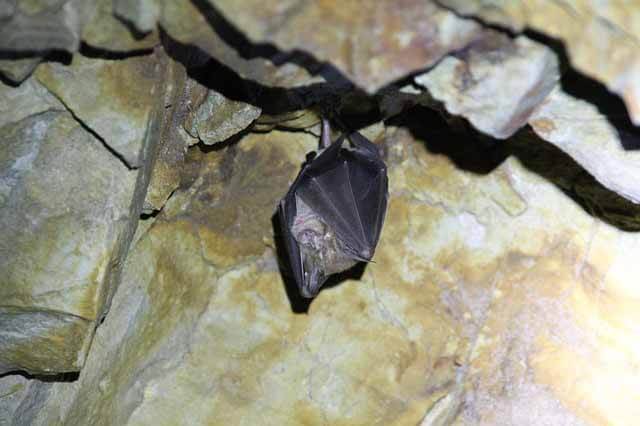Ukraine has been viewed by some as having become a training ground, networking opportunity, and general hub for the far-right due to the conflict in the east of the country, which began in 2014.
With this type of terrorism on the rise in the West and events like the storming of the US Capitol Building in January 2021 fresh in the memory, it should come as no surprise that any such possibilities will generate concern.
To investigate the types and extent of the threats posed by participants in the Ukraine conflict, we scrutinize the activities of a few alumni that we know of to date, as well as highlighting neglected historical episodes of right-wing fighters.
We make three arguments here based on occurrences so far. Firstly, we know little about far-right foreign fighters and more attention needs to be paid to historical instances of the phenomenon.
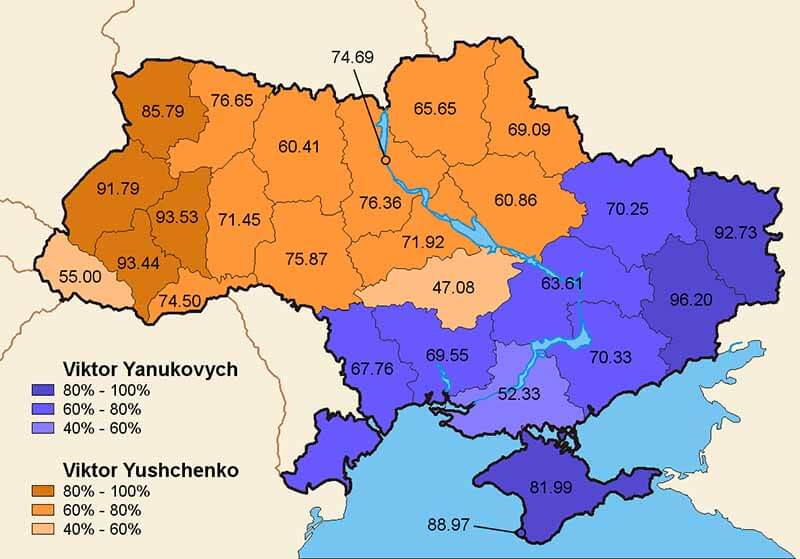
Secondly, some limited but diverse threats have already arisen from the Ukraine conflict and others may emerge in the future, but it would be unwise to overplay and homogenize the problem.
Finally, it is Ukraine itself that probably faces the greatest challenges from its domestic far-right, although, if left unchecked, it may affect others in providing a space for, and permitting the growth of, connections with like-minded individuals and groups based elsewhere.
Despite our warning about exaggerating the problem, Western security services should be taking the far-right very seriously at present, such as in relation to potential infiltration of them by such elements.
The non-mercenaries among them are motivated by causes that can stretch back to the wars in the former Yugoslavia – and even further still, to the Spanish Civil War of the 1930s.
During the last decade at least 17 000 individuals, mostly Russians but also up to 1000 Westerners, joined the war in Ukraine.
Many came from extremist settings, predominantly far-right (brown) but also far-left (red). During the last decade, most discussion on the issue of foreign (terrorist) fighters has been dominated by the issue of Westerners joining ISIS in Syria/Iraq.
At the same time, however, another foreign fighter mobilization was taking place in Europe as at least 17 000 individuals (mostly Russians but also up to 1000 Westerners) joined the war in Ukraine.
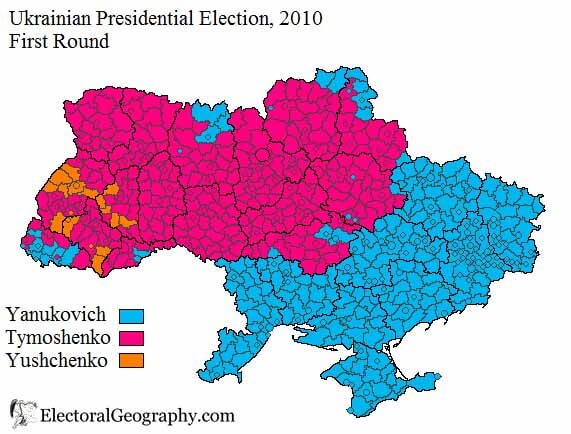
Many of the fighters came from extremist settings, predominantly far-right (brown) but also far-left (red).
These ideological divisions did not stop them from becoming brothers in arms as, in the words of one fighter, “communists and Nazis alike” fought together on both sides of this war.
This created a truly post-modern brown-red cocktail in which both political extremes were seemingly eager to project their socio-political fantasies onto a European conflict.
As the ingredients of the cocktail (i.e. individual fighters) have now mostly moved on from Ukraine, it is important to take stock of their post-conflict trajectories and see if they morphed into e.g. career foreign fighters, mercenaries, or proponents of anti-state violence at home.
This will have implications for the future policy options vis-à-vis the other, non-jihadi or non-terrorist, foreign fighters.
According to the Minsk agreements, the UVA’s soldiers were supposed to have left the contact line three years ago.

The UVA is a volunteer military formation whose members have been fighting on the contact line since the start of the war in 2014.
In spite of ongoing attempts by the Ukrainian Armed Forces to integrate volunteer battalions into the regular army, the UVA remains legally ambiguous.
The direct participation of volunteer soldiers in fighting with the subdivisions of the regular army is not regulated by Ukrainian law, Ukrainian Armed Forces representatives told Hromadske.
“The Mongolian” and his fellows are like in a “cauldron” here: 200 meters from the right and 700 meters from the left the positions of the separatists to start.
Roman stresses that the role of volunteers in this war is extremely significant and thanks to them. In 2014, the only thing which was provided by the Armed Forces of Ukraine was the bulletproof vest. “They gave us out simple rifles and that was all.
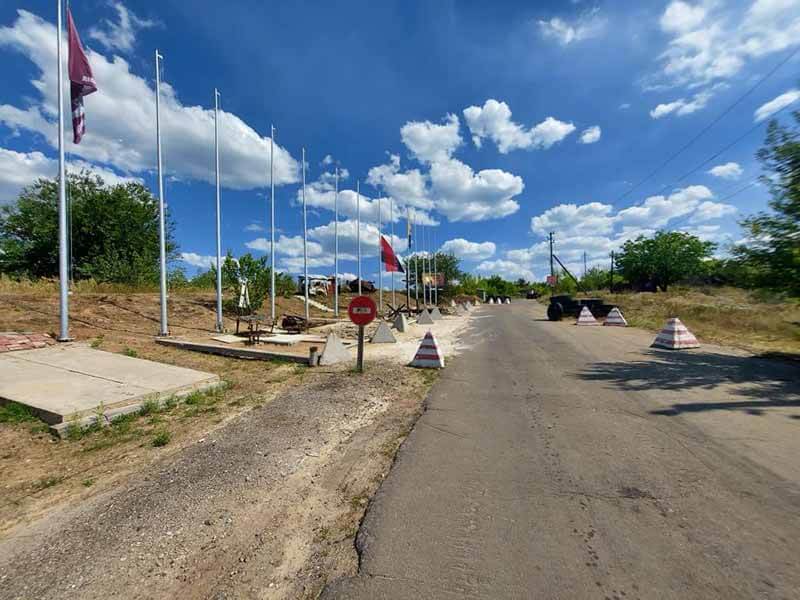
They didn’t give us assault rifles, because two columns that were going to the conflict zone before us got into encirclement”, – Roman says. On the contrary, the government, he thinks, is consciously perpetuating the conflict. “There is enough of equipment at big state military warehouses, but they don’t give it out to us”, – he says.
“The situation now has got a bit different. We were maneuvering before and here we are having a trench-position war. Our feet have been wet for more than a week. I think we’ll get used to it and lose all the adrenaline we have.
There’s nothing good in catching a cold and getting ill”, – Roman shows his legs in mud up to the knees. However, he says that it has gotten easier than it was in 2014 when everyone didn’t know what to do and how.
Roman remembers when the Minsk agreements were just signed. “In general, all the ceasefires started from serious artillery preparation at all the positions.

They usually use shoot less from small arms during the ceasefires, but use more heavy weapons. That’s what the ceasefire is like. That side has never kept the ceasefires.
Each time when we opened fire in response their losses were high and they were asking for a ceasefire and our commanders were scolding us for not keeping it”, – Roman says.
“We don’t shout “Betrayal!”. We got used to everything. We’re just trying to do our best. The problem is that commanders are so “wise” that even manage to put spoke into the wheel. We want to finish this was and get back to our families”, – he says.
On both sides of the war in Ukraine, foreign fighters have flocked in their thousands to take part, many of them from the former Soviet Union.
Whilst thousands of regular Russian soldiers and volunteers have fought alongside the DNR and LNR separatists, a number of Russians and Belorussians have also fought for the Ukrainians.
With the worst of the fighting in the east now over, Ukrainian forces have been able to draft enough soldiers to hold the front lines, and the immediate need for these irregular fighters has largely gone.

But despite their service and sacrifice those volunteers from Russia and Belarus face prison time if they return home, and many are now battling for citizenship in Ukraine.
The XRW foreign fighters from the conflict in Ukraine have many things in common. They may have fought in different units or different sides of this war, effectively shooting at one another, but the interviews and the open-source research on such fighters reveal a core of beliefs that are widely shared among them.
It is this common belief system that will be analyzed first. These fighters all speak in favor of a traditional family, which they see as the bedrock of any given community or nation. At the same time, they deny Lesbian, Gay, Bisexual, and Transgender (LGBT) rights.
Since, however, many are proponents of individual liberties, they insist that they would not criminalize homosexuality, for instance, but are adamant that practicing it must be confined to one’s home.
Some of the fighters are Christians, one even said that he was a “Christian fundamentalist,” but the majority does not seem to have firmly established Christian values either. For many, it is useful as a demarcation line vis-a-vis both Islam or Islamism and socialism or liberalism.
The fighters see themselves as “nationalists” and “patriots,” and they all profess “love” of their countries of origin and of “Europe” or “Eurasia.” Frequently, they would call themselves “European patriots” who abhor integrationist and “bureaucratic excesses” of the current European Union.
In their view, Europe ranges either from Vladivostok to Lisbon or from Ukraine to Lisbon and is not identical with the current community of 27 member states.
Moreover, in their political belief, Europe should be “nationalist” but not “chauvinist,” i.e. rid of petty territorial disputes among the nations but focusing on the key issues and enemies, such as all sorts of “fifth columns” that in their view are already within the European borders-oligarchs, media moguls, socialists, liberals, Islamists, jihadists, immigrants, and refugees from outside Europe (especially the broader MENA region), corrupt politicians, as well as multinational corporations destroying the environment.
Some, especially the foreign fighters deployed on the Ukrainian side, would also add Russia to this list of significant “enemies.”
Regardless of whether the fighters genuinely believe what they are saying, are ignorant of the nature of these things, manipulated into doing so by peer pressure, or reducing it to mere provocation, they certainly speak a different language than authors, journalists, or researchers who attempt to capture a snapshot of their world and communicate it to a wider audience.

Their terms of reference, starting points, or simply socially acceptable lowest-common denominators are often outside the “appropriate” or “acceptable” norms held by individuals asking them questions. This is not to suggest that these fighters are beyond the pale, far from it.
Some are articulate, have a good education, and on an everyday level aspire to things desired by the majority of their compatriots, e.g., a steady job, house, family, etc. At the same time, they did not have the happiest of lives before their involvement in the conflict in Ukraine.
They had either been restless, adrenaline junkies, cause-focused, seeking the next adventure, or fatalistic about the future of the West/Europe/their country due to a multitude of factors, such as alleged corruption, what they call the liberal diktat, or their perception of American imperialism, cultural Marxism, etc.
The key thing for any Western wannabe foreign fighter that wanted to deploy to a given foreign war was logistics-mostly the issue of how to get “there.” As discussed above, the fighters might have been well connected amongst themselves but few-apart from the Swedes from the Party of the Swedes with the Svoboda party in Ukraine-had tangible links to Ukraine.

They managed, however, to get there and most often without the knowledge of either Russian or Ukrainian interlocutors, and subsequently enlist in the ranks of either the Ukrainian volunteer battalions or the forces of the so-called “separatists.”
This was possible due to the fact that the fighters were often just the tip of the iceberg and sometimes the most visible face of a given mobilization.
Their arrival was often preceded by that of supporters or fans of a given side in the conflict, sympathetic journalists, writers, activists, and humanitarian workers.
Some would help with opening doors to the fighter’s Ukrainian or DNR/LNR hosts and helped the internationally networked foreign fighters make the necessary connections on the ground in Ukraine.
Sometimes, both groups-the fighters and individuals in the larger support network-would first: “chat over social media and then meet in person, and we talked.
They couldn’t get us-they couldn’t understand our desire to fight. For them, this was all about sending aid.”
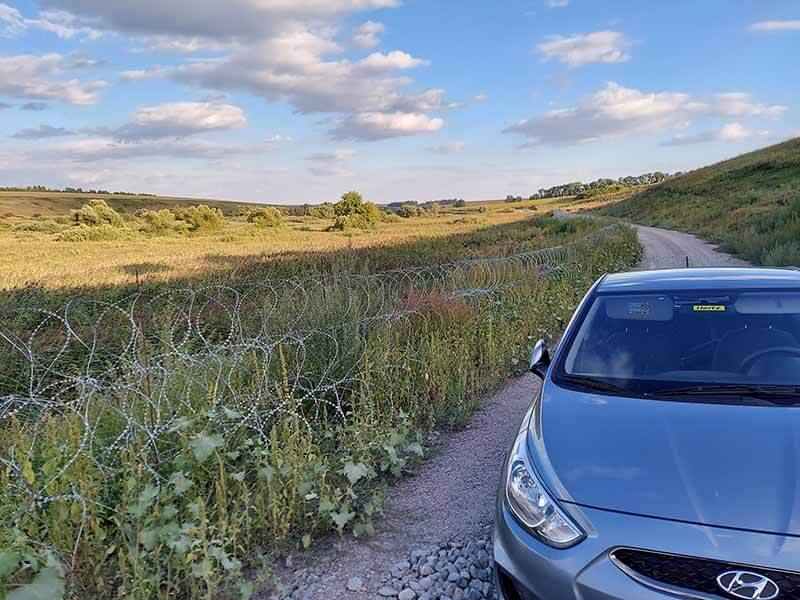
When Australian former Neo-Nazi and registered gun owner Ethan Tilling flew into Brisbane this year, he was returning under the radar of Australian authorities with newfound combat experience from a brutal and forgotten war.
Mr. Tilling, who was until recently a member of the Nazi group Right Wing Resistance, had spent the Australian spring in the bitter cold of Eastern Ukraine firing Kalashnikovs, rocket launchers, and grenades at Russian-backed separatists.
The 23-year-old former soldier from Brisbane is one of two Australian ex-Defence Force personnel identified by the ABC who have joined thousands of ultranationalists flocking from across the world to take up arms in the eastern Ukrainian region of Donbas.
Mr. Tilling and former Royal Australian Air Force airman Jared Bennet joined a patchwork of pro-Ukrainian militia groups taking on the Russian-backed separatists in a chaotic and stuttering conflict, which has become to right-wing extremists what the war in Syria is to jihadists.
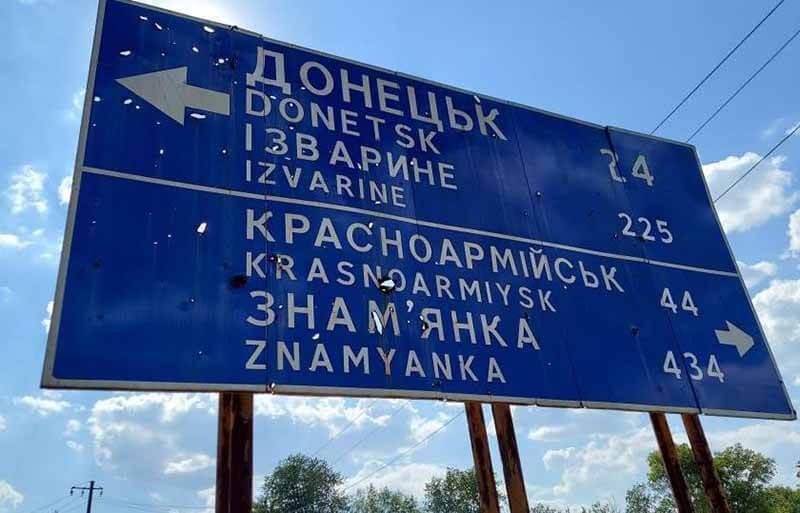
Two battalions of the Ukrainian Volunteer Army (UVA) are officially demobilizing after fighting at the contact line in the Donetsk region for over four years.
The announcement came from Dmytro Yarosh, the UVA’s commander since its founding in 2015. “The 5th and 8th separate battalions of the Ukrainian Volunteer Army are leaving the contact line, but we are not abandoning the war,” Yarosh announced in Dnipro in mid-October.
Roman, call sign “The Mongolian”, is 26 and has been serving in the Armed Forces of Ukraine for 3 years already.
He is a sniper and says that the fighters even promise the reward for him. Still, he doesn’t hide his face and sincerely tells us his story.
For security reasons, we aren’t allowed to tell either the subdivision or the positions Roman keeps.
Roman told an interesting story about the training camp he went through. “There were guys from the anti-terrorist area in our company, who served in the 93rd Brigade, kept positions in the airport, went through Debaltseve, Ilovaisk and whatnot, and when they signed a contract they were sent to Desna training camp and sergeant-conscripts was teaching them.
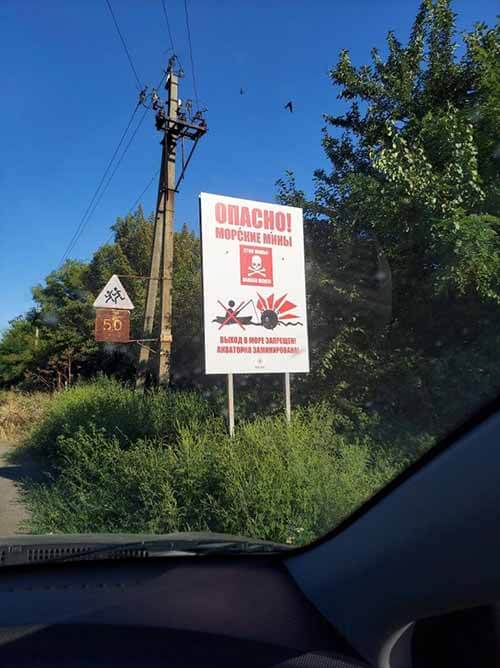
They even didn’t know how to hold weapons in their arms right. In fact, we were teaching them, not they us”, – Roman says.
Also, he complains that they were forced to wear the “pixel” uniform, which doesn’t have a camouflage effect, fits awfully, is made of threads of bad quality, and gets torn very quickly.
French, Spanish, Swedish, or Serb, the foreigners fighting for both sides in east Ukraine’s bloody conflict hail from across Europe and come with a bewildering array of agendas.
Russia is the elephant in the room, dwarfing any other foreign nationality, although it is increasingly hard to disentangle Russians fighting as volunteers from regular soldiers allegedly deployed on covert missions.
Ukraine’s pro-Russian rebels like to talk up their foreign volunteer fighters, presenting them as latter-day International Brigades fighting “fascism“. Meanwhile, there has been some debate in Kyiv on the wisdom of creating a Ukrainian “Foreign Legion“.
Here we look at some of the foreign fighters by country of origin, in a phenomenon which, in a small way, mirrors that of young Muslims from Britain and other parts of Europe traveling to the Middle East to fight in its wars.
It is no secret that Russian citizens have occupied senior posts among the rebels, the most famous of them being Igor “Strelkov” Girkin, who reportedly held the rank of reserve colonel in Russia’s Federal Security Service as late as last year.
Foreign fighters from different countries
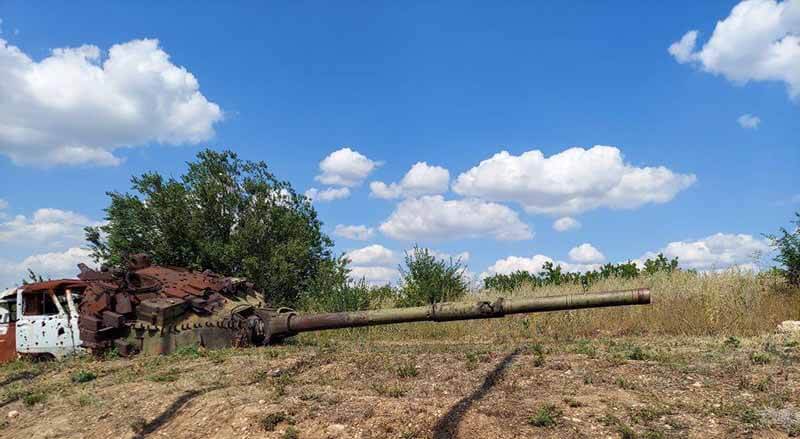
USA
The US will not fight for Ukraine in Donbas, Russian Foreign Minister Sergey Lavrov said on Wednesday.
Those, who think the opposite, are worth nothing, Lavrov said in an interview with the Russian RIA news agency.
“It is pointless to count on the military assistance of the United States. This was always known to everyone. If anyone had any illusions that such help would come, well, such advisers are worthless in any government, including the government of (Ukrainian President) Mr. (Volodymyr) Zelensky,” Lavrov said.
The minister added that the main responsibility for the Ukrainian settlement currently lies on the West because it has “real influence” on the Ukrainian leadership and can make it take steps necessary to implement the Minsk Agreement.
“The main responsibility lies with the West because only the West can make Zelensky do what his predecessor signed, and what Zelensky signed too when in December 2019 in Paris he confirmed together with the presidents of Russia, France, and the German chancellor that there is no alternative to the Minsk Agreement,” Lavrov said.
Lavrov said the leaders of Germany, France, Russia, and Ukraine have worked on the Minsk Agreement for more than 17 hours in a row and that all steps and their sequence are “thoroughly verified,” and that attempts to change the order or steps themselves will lead to nowhere.

Lavrov went on saying Russia is preparing a list of “unfriendly countries,” will publish it soon, and will “periodically complete it.”
The minister promised that putting a country on the list will be clear and that the list will be revised depending on how “relations with the relevant state develop in the future.”
Lavrov noted that Britain “plays a serious role in undermining Russia’s relations with other European countries.
“As for relations between Russia and Europe, I think that the British are playing an active, very serious, undermining role. They have left the European Union, but in this respect, there is no decrease in their activity. On the contrary, they try to influence as much as possible what positions the EU members will take in relation to Moscow,” Lavrov said.
At the same time, London “sends signals, offers to establish some contacts,” Lavrov added.
“They do not shy away from communication themselves, but they try to discourage others from it. Again, perhaps, the desire to have a monopoly on these contacts (with Russia) proves that they are above many,” Lavrov said.
The diplomat added that Russia is ready for any developments and sanctions, including a possible switch off the SWIFT payment system. Also, it is always ready to return “to normal relations” with countries that show a willingness to it, he said.
Despite rebel allegations to the contrary, there is little evidence of American volunteer involvement on the ground. The exception was a Ukrainian-American called Mark Gregory Paslawsky, who had taken Ukrainian citizenship.
Paslawsky, or Franko as he liked to be known, was killed fighting for the Ukrainian government side in the embattled town of Ilovaisk.
In an interview for Vice News, the 55-year-old West Point graduate and investment banker from New York had explained he wanted ultimately to help root out corruption in Ukraine, saying “the political elite has to be destroyed here“.
Russian media suggest that there are US citizens fighting for the rebels too.
Ukrainian officials asked Washington for lethal weapons to help fight Moscow-backed separatists. What they’ve just received, you might say, is the next-best thing: about 300 soldiers from the United States Army’s 173rd Airborne Brigade to train Kyiv’s troops in the ways of war.
This week, the American soldiers are kicking off a six-month training program at a military base here in western Ukraine – about 800 miles from the rebel insurgency out east – to boost the fighting capability of Ukraine’s National Guard.
The program, dubbed Operation Fearless Guardian, is also Washington’s way of signaling support for Ukraine while avoiding a full-on confrontation with Russia by providing offensive weapons.
The White House has already promised Ukraine nonlethal military aid, like armored Humvees, surveillance drones, and first-aid kits, worth $75 million.
“I think as we progress and move through this training, we’ll learn a lot from each other,” Capt. Matthew Carpenter, who commands around 70 troops in the brigade, said at the opening ceremony on Monday. “And we’re really excited.”
Moscow has long complained that Washington is propping up a pro-Western government in Ukraine that launched the war in the east, where more than 6,000 people have been killed since last year.
It also believes Ukraine’s campaign against the rebels is actually part of a broader Western plot aimed at undermining Russia. That’s despite Western allegations that Moscow is fueling the pro-Russian insurgency through weapons and even military support.
Vladimir Putin’s spokesman was quick to respond to the arrival of US troops in Ukraine, saying it “could destabilize the situation.” A fragile truce in eastern Ukraine reached in February has been marked by regular small-scale violations.
But the Americans here say they’re staying out of politics and focusing on training their Ukrainian counterparts.
The program will involve about 900 members of Ukraine’s National Guard, many of whom have already seen action in the east, and will include both individual and group instruction on everything from medical support to weapons use.
So far, the Ukrainian troops say they’ve been impressed by the American discipline they’re perceiving.
“If a soldier is walking along and sees a sergeant, the reaction is really something you have to see,” said Vadym Perepichka, a senior lieutenant in the elite Jaguar regiment that’s fought on the front lines in eastern Ukraine. “It’s as if he’s seen God himself.”
Lessons in discipline might come in handy.
When the war with Russian-backed militants broke out last spring, Ukraine’s fighting forces were poorly trained, in disarray, and marred by widespread corruption.
So Kyiv relied heavily on an array of volunteers to fight alongside the regular army. Some of the volunteer units, many of which are now part of the National Guard or the Interior Ministry, were criticized for their far-right ideology, private funding, or even reported rights abuses in government-held territory.
Ukrainian President Petro Poroshenko said most of the country’s “so-called volunteer battalions” have been successfully integrated into official structures. He was also eager to cast the National Guard as a professional fighting force.
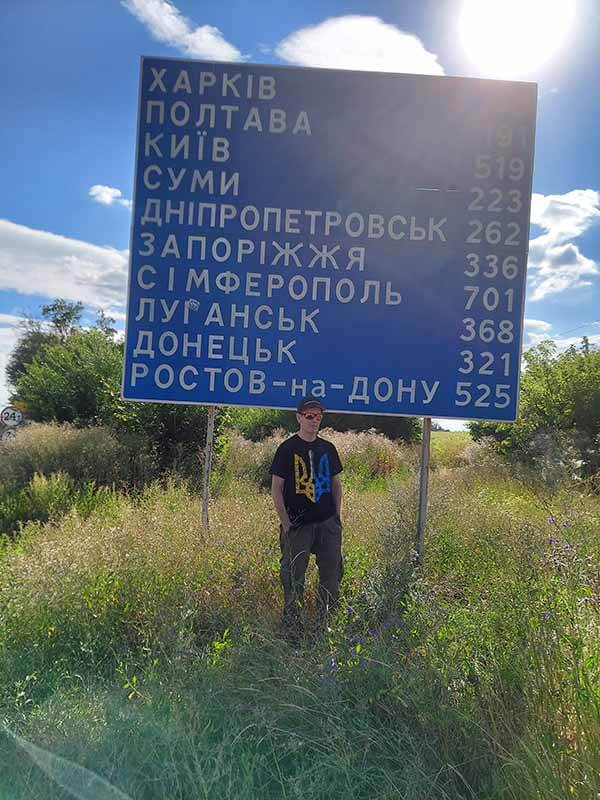
On the surface, training only 900 Ukrainian troops may seem insignificant, especially since tens of thousands of soldiers have been involved in the government’s proclaimed “anti-terror operation” in eastern Ukraine.
But analysts here say the training could produce a trickle-down effect, in which the Ukrainian troops would pass on lessons learned from the Americans to their comrades-in-arms.
And according to Oleksiy Melnyk, a defense analyst at the Razumkov Center think tank in Kyiv, the US mission also sends a strong political message to the Kremlin.
“The noise raised by the Russian side about how this destabilizes the situation is a sign of how crucial [the US presence] is,” he said. “In reality, this is a stabilizing factor.”
Russian
There is strong evidence that rank-and-file Russian fighters have entered east Ukraine to join the rebels, but whether they are volunteers making common cause with ethnic Russians in Luhansk and Donetsk, or mercenaries, is a grey area.
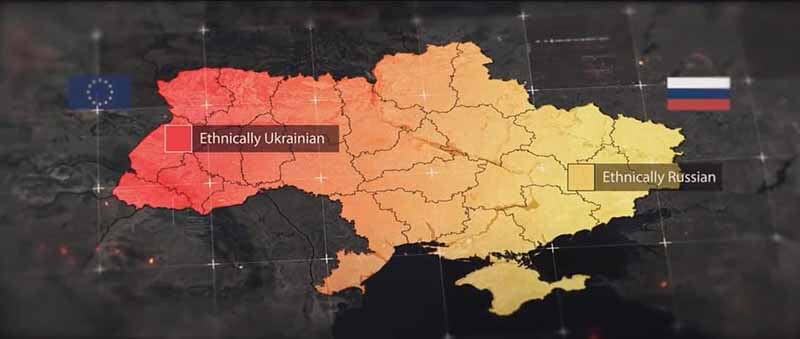
Rebel leader Alexander Zakharchenko has stated publicly that between 3.000 and 4,000 Russian “volunteers” have fought for the rebels since the start of the uprising in April.
“There are also many in the current Russian military that prefer to spend their leave among us, brothers who are fighting for their freedom, rather than on a beach,” he said on 28 August.
Evidence has mounted that regular Russian soldiers are involved, with 10 paratroopers captured inside Ukraine and indirect evidence of military casualties at home in Russia.
Chechens, both from Russia’s Republic of Chechnya and from the anti-Russian diaspora living in exile, are believed to be involved on both sides of the conflict, but predominantly fighting for the rebels.
A gunman who presented himself as a Chechen called Ruslan Arsayev told the Mashable news website in an interview he was fighting for Ukraine because he wouldn’t “bend over for Putin“.
A number of foreign fighters serve in the Aidar volunteer battalion currently fighting in east Ukraine. Chechen Ruslan Arsayev is perhaps the most colorful example.
An army veteran of six military campaigns, Ruslan came to Ukraine to fight during the Maidan revolution. He was injured twice, once seriously, when a bullet punctured his lung.
He comes from a well-known family of warriors. One of his brothers was a security minister in Aslan Maskhadov’s rebel government. Another was convicted of hijacking a plane en route to Moscow in 2001, an action that resulted in the loss of three lives.
At the Aidar base near Luhansk, Ruslan explained he had come to Ukraine because of Putin. “Putin has turned my home into Stalin’s Russia, with a dozen informants on every street,” he said. He wasn’t prepared to accept Putin’s rule and predicted an uprising in Chechnya in the “very, very near” future.
France
Some 20 French citizens have gone to Ukraine to fight on both sides, French public radio station France Info said in a report (in French) on 11 August.
Four of them, including two former soldiers, went to Donetsk to fight for the rebels. They were filmed by Russian newspaper Komsomolskaya Pravda posing with guns.
Their spokesman is Victor Lenta, 25, who earlier told France’s Le Monde newspaper (article in French) he had been a corporal in the Third Marine Infantry Paratroop Regiment and had served in Afghanistan, Ivory Coast, and Chad.
Another member of the group is Nikola Perovic, also 25 and with Serbian ancestry, who likewise reportedly fought in Afghanistan as a corporal in France’s 13th Mountain Infantry Battalion.
They told Le Monde they were the founders of an ultra-nationalist movement called Continental Unity, which has organized demonstrations in France and Serbia in support of Syrian President Bashar al-Assad and Serbian war crimes suspect Vojislav Seselj.
In their view, according to Le Monde, Russia is the final bulwark against liberal globalization which they consider “responsible for the decline in national values and loss of French sovereignty”.
Their main role among the rebels, apparently, is to provide combat training for recruits from West European countries.
Gaston Besson, on the other hand, has been fighting for the Ukrainian government as a member of its Azov volunteer battalion, a unit known for its far-right associations.
Aged 47, he nonetheless describes himself as a “leftwing revolutionary”, according to France Info. Reported to be a former paratrooper, he is said to have fought in previous conflicts ranging from Croatia to Colombia
He is known for his efforts to recruit other foreigners and, according to a Eurasianet article, wrote in June: “Every day I receive dozens of requests to join us by email, especially from countries like Finland, Norway, and Sweden.”
Spain
For two Spanish leftists, the conflict in east Ukraine represents a chance to repay what they see as a historic favor.
Angel Davilla-Rivas told Reuters news agency he had come with his comrade Rafa Munoz Perez to fight for the rebels in recognition of the Soviet Union’s support for the Republican side in the Spanish Civil War.
Mr. Munoz, 27, is a former social worker from Madrid who has been a member of the youth wing of the United Left political movement since 2010, Spain’s El Pais newspaper said in an article. His friend, 22, is from Murcia and belongs to the youth wing of a branch of the Spanish Communist Party, the paper added.
Mr. Davilla-Rivas showed off tattoos of Soviet leaders Vladimir Lenin and Joseph Stalin on his torso.
“I am the only son, and it hurts my mother and father and my family a lot that I am putting myself at risk. But… I can’t sleep in my bed knowing what’s going on here,” he told Reuters.
There are also reports of Spaniards fighting on the government side, according to an article in the Kyiv Post.
Serbia
Dozens of Serbs are believed to be fighting for the rebels, ostensibly drawn by an ethnic and nationalist sense of solidarity with the region’s Russian Orthodox Christians and residual hostility towards Nato, regarding the Ukrainian government as its proxy.
However, Belgrade-based security expert Zoran Dragisic told German broadcaster, Deutsche Welle, in a report that Serbian fighters were primarily fighting as mercenaries and could be found on both sides in Ukraine.
“It’s indoctrination that draws young people – some of them almost children – to war,” he said.
Meanwhile, there are moves within Serbia to stem the flow of fighters heading east with a law that penalizes participation in a foreign war.
Sweden
In an interview with the BBC’s Dina Newman, a Swedish sniper with far-right views, Mikael Skillt, said he was fighting for the Ukrainian government because he believed in the “survival of white people”. Like France’s Gaston Besson, he is a member of the Azov battalion.
“I would be an idiot if I said I did not want to see the survival of white people,” he said. “After World War Two, the victors wrote their history. They decided that it’s always a bad thing to say I am white and I am proud.”
At the same time, he added that he planned eventually to fight for Syrian President Bashar al-Assad because he believed Mr. Assad was standing up to “international Zionism”.
Poland
Reports that Poles were fighting in Ukraine prompted the government in Warsaw to formally deny that Polish citizens were fighting as mercenaries for the Ukrainian government. It went on to warn that any Poles who go there to fight could face jail upon their return, Deutsche Welle reports.
Leonid Smolinski, a 49-year-old Polish citizen born in Ukraine, was killed in a rebel ambush on 12 August while serving in Ukraine’s Dnipro volunteer battalion, according to Euromaidan Press.
At least one Pole has also sided with the rebels. In a speech in the rebel capital Donetsk, carried by radical Polish website portal, Bartosz Becker described himself as a representative of “Polish free people who are against Nato terrorist bases in Poland”.
Germany
Margarita Zeidler is a former nurse who moved to Ukraine in 2002 for religious reasons after converting to the Russian Orthodox Church, according to an interview with Komsomolskaya Pravda newspaper (in Russian).
Dismayed by events in Kyiv during the Maidan uprising over the winter she moved initially to Crimea, then to the Donetsk region, she said, after one of her friends was shot dead there in May. She became the rebels’ information officer in Sloviansk during its siege by government forces.
While she describes herself as a journalist, she told the newspaper that she always keeps an assault rifle “within reach”.
Speaking in Russian in a video posted on YouTube on 11 August, she said she could not “stand by and watch Ukrainian fascists kill civilians”.
Italy
Francesco F, 53, enrolled in the Azov battalion to “fight a good fight against Russia“, the Italian weekly Panorama reported in an article (in Italian) in June.
Already doing business in Ukraine two years before the violence erupted, he said he had “found his home alongside Ukrainian nationalists” on the Maidan barricades.
Francesco, who also featured in a video report by Il Giornale, has a past in the far right in Italy, according to Panorama.
The Dutch fighters in Ukraine
Several analysts believe that the largest influx of foreign fighters started in 2015. Based on its own research on these foreign fighters, the Soufan Center states that among the reportedly 17,000 fighters, at least eight are Dutch.
Five of them are said to support pro-Russian separatists, while at least three would have joined the pro-Ukrainian side. However, this estimate of Dutch nationals joining the war in Ukraine is not undisputed.
At the end of 2019, then-Foreign Minister Stef Blok replied in response to Parliamentary questions that the numbers could not be confirmed, although the involvement of Dutch nationals was “recognized”.
Therefore, a degree of uncertainty exists about the actual number of Dutch nationals in the conflict.
To provide more insight into these Dutch fighters, the authors were able to identify several cases, concentrating on Dutch nationals who traveled to Ukraine to join or support an armed group.
Thus, one case (of a woman) has been included in which the support seemed to have been more indirect and not linked to fighting activities.
It should be noted, however, that the sketches below are based on media sources as well as testimonies of these foreign fighters, who may have reasons to exaggerate their participation, weaken it, or possibly invent it together.
In most cases, it is not possible to determine to what extent these individuals have contributed to the fight, or if they were just present in the conflict zone. Taking all of this into account, the sketches thus primarily offer an insight into how these Dutch fighters want to present themselves.
Ukraine warns Serb fighters
Ukraine takes a stern view of foreign fighters arriving to join the conflict on its territory and has warned that could face prison or death.
The Ukrainian ambassador to Belgrade, Oleksandr Alexandrovych, said that this is “not an internal conflict in Ukraine, it is a war waged by the Russian Federation against Ukraine.
The International Criminal Court back in 2016 defined it clearly as an armed conflict between the Russian Federation and Ukraine. “So, anyone, including Serb mercenaries, who will enter Ukraine illegally and with arms with intent to shoot at Ukrainians, can and shall be killed or captured, in full compliance with the Ukrainian and international law,” Alexandrovich warned.
“It is futile to appeal to the conscience of those mercenaries, but I appeal to their relatives and loved ones here in Serbia – please hold them back or you may lose them,” he added.
Ukraine has repeatedly complained that Serbs who traveled to Donbas to fight and were arrested on their return home have not been adequately punished. “As the ambassador of Ukraine, I am not satisfied with the efforts of Belgrade to prosecute those criminals.
There are quite a lot of them – a few hundred since the beginning of the war. They often serve as snipers posing grave danger to the Ukrainian military and civilian population,” Alexandrovich said.
He insisted that the Ukrainian authorities provide “regular information about their identities” to Serbia but said he did not know how this information has been used.
“So far, I am not aware of a single person being judged and sentenced to real prison terms. Suspended sentences are obviously not an adequate punishment, because many of them come back to Ukraine to repeat their crimes. Sometimes, they brag about it openly on social media. This is outrageous,” he said.
Bosnian Acquitted of Going to Fight in Ukrainian Conflict
The state court in Sarajevo on Tuesday found Gavrilo Stevic not guilty of going to fight abroad, in the first case in Bosnia and Herzegovina against a defendant accused of involvement in the Ukrainian conflict.
Presiding judge Branko Peric said the prosecution had not proved that in July 2014, Stevic went via Belgrade, Moscow, and Rostov-on-Don to Ukraine, where he joined the Jovan Sevic paramilitary unit together with several other Bosnian citizens.
“After having assessed the evidence in its entirety, the chamber cannot conclude beyond reasonable doubt that the defendant committed the crimes with which he is charged,” Peric said.
He said that Stevic had admitted being in Luhansk in a separatist-controlled area of eastern Ukraine, but that there was only one photograph of him that might suggest he joined the pro-Russian unit. “His stay in the area and one picture cannot be considered evidence that he joined a paramilitary formation.
It could be concluded on the basis of that photo that it was bragging, rather than a real situation,” Peric said. Stevic told prosecutors that he went to Ukraine as a journalist and writer, not as a fighter.
Peric said that prosecution evidence obtained about Stevic from the internet or newspaper articles “could only serve as information during an investigation”, not during the trial.
The prosecution had claimed that Stevic was given a handgun and patrolled checkpoints when he was a member of the unit, receiving a monthly salary of 500 euros.mIt also claimed that Stevic received help from the Serbian nationalist Ravnogorski Movement to get to Ukraine, and traveled from Belgrade with a group of volunteers.
About the author: Michael Parrotte was the Vice President of AGV Helmets America, and a consultant for KBC Helmets, Vemar Helmets, Suomy Helmets, Marushin Helmets, KYT Helmets, Sparx Helmets. In addition, he is the founder and owner of AGV Sports Group.


